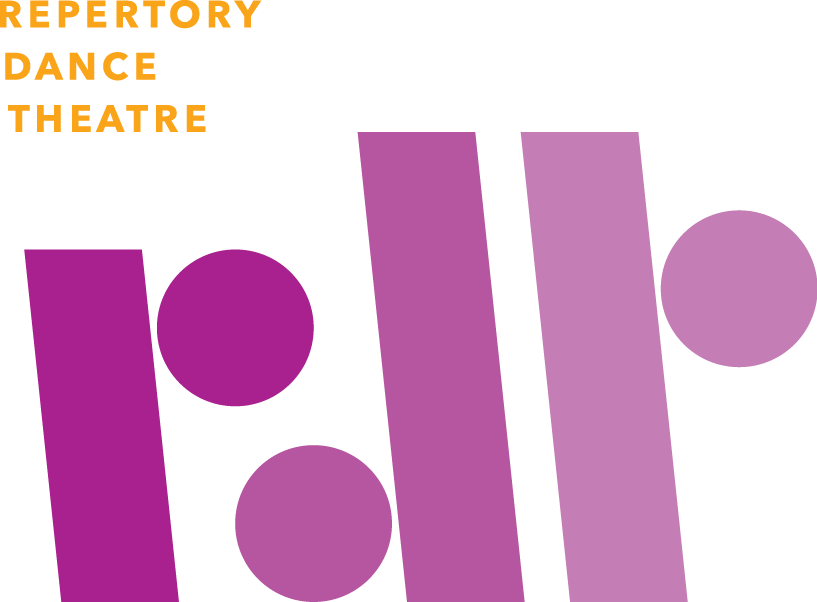This Lesson Plan came from the work the company did with choreographer Kaley Pruitt on a work called HOLD. It is based on the idea of abstracting different words and their meaning into movement. The dancers went through this lesson plan as they created movement for the piece under the direction of the choreographer.
Learning Objectives/Goals
Isolating different body parts, experience different energies in Movement, develop ability to abstract words through movement, Create a movement sequence by abstracting words.
Materials Needed
The following words written on white board or paper:
Approach
Side step
Turn away
Collect
Reverse
Reach
Fall
Lay low
Protect yourself
Rebound
Startle
Drum, music, and students will need paper and writing utensil for the end of class.
Introduction
Expectations for class, define dancing/movement space, encourage students to be creative and experiment with new ideas and things throughout class.
Warm-Up
Have students spread out into the movement space. Guide them through a series of isolations (moving one body part at a time) starting with the head. Make sure to let them know for this first round their feet will be staying in place. This first round is a time when we can begin to experience abstracting words. “Now try only moving your right arm. Can you wave to someone else in the room? What if you tried to wave with your elbow. Let’s try to isolate our torso now, but how can you make your torso wave.”
Next turn on some music and tell students they will now explore moving multiple body parts at the same time but while traveling. This is a time to explore new ways of traveling through space. Try introducing words such as gliding, turning, crawling, walking, skipping. “How can you glide your head through space. What does crawling on a high level look like for you? Can you skip with your elbows and feet at the same time?” Also encourage students to play with traveling on different levels of high, medium, and low.
Investigate
Show the students the list of words on a white board or paper. These are the words that the RDT dancers used in creating their own solos for Kaley Pruitts’ new choreographic work HOLD. Kaley would read the words to the RDT dancers and they would respond with the first thing their brain and body wanted to do. You will do the same thing as Kaley did with the students. The list of words above is quite long so feel free to do the first 4-or pick them at random. You could also have the students select 4 of their own words.
Create
Call out the word and give the students a few moments to create movement for the word. Before calling out the next word ask the dancers to identify their movement a little more clearly for themselves. “Are you changing level or direction? What parts of your body are you utilizing? Are you doing the literal word or are you abstracting it?” Read the next word
and have the students create another movement to represent that word. Do this until students have 4-6 movements.
Split the students into 2 groups and have them show each other what they have created. You could put on music and have them move slowly (or quickly) from one movement to the next. Or you could call out the words and have dancers perform their movement and then freeze. Once the first group has performed their movement for the other switch and have the second group do the same as the first group.
If there is time you could put the students into pairs and have them “merge” their movement phrases. They could do the same movement as each other, do their movements side by side with the same facing, or they could switch up the
words/movement order. Encourage students to introduce some traveling to these phrases. “Can you use gliding and skipping in-between 2 of the words/movements you selected?” Could you travel in opposite directions and then come back together?” The idea here is that the students will share what their ideas are and work together to create something new. Once the students have a new phrase let them perform it
Reflect
Ask students what was challenging about the exercise and ask them what they saw their peers do. “Did you see anyone make similar choices? What did you find interesting about your peers movement? How was this challenging for you, or what did you enjoy about it?” After having a quick small discussion give the students a piece of paper and a writing
utensil. Ask them to write or draw a reflection of the exercise. It could be words they would like to abstract through movement, shapes they saw, or anything they want to write down about the exercise. You can have them share these in small groups, with a partner, or keep them for themselves.
Extension to the Lesson
When Kaley Pruitt was choreographing HOLD she took a moment to reflect and write down about her time during quarantine. From her writing she created the list of words that we used above. You could have students do the same thing that she did.
Students could write a small paragraph or an entire essay as part of a writing assignment. Then you could have them pull words out of their writing. They would have a list of words they wrote themselves and that they selected. They then would create a movement phrase the same way that we did above. You could have them read their writing (or just the words they selected) and then perform the movement they created.
Follow-up Resources
Take a look at HOLD and see if you can see the ways dancers used this exercise in creating movement and how the choreographer then sculpted it into a piece.

